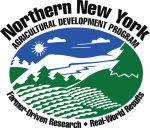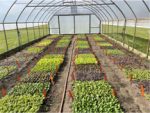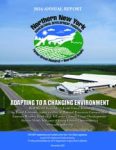 August 26, 2025. The Northern New York Agricultural Development Program has announced a call for 2026 research project proposals. The NNYADP was established by the New York State Legislature to grow the farm and foods economy across the state’s northernmost region of Clinton, Essex, Franklin, Jefferson, Lewis, and St. Lawrence counties. Application forms and guidelines are posted at nnyagdev.org under the About: Projects by Year tab. The deadline to apply is October 31, 2025.
August 26, 2025. The Northern New York Agricultural Development Program has announced a call for 2026 research project proposals. The NNYADP was established by the New York State Legislature to grow the farm and foods economy across the state’s northernmost region of Clinton, Essex, Franklin, Jefferson, Lewis, and St. Lawrence counties. Application forms and guidelines are posted at nnyagdev.org under the About: Projects by Year tab. The deadline to apply is October 31, 2025.
The farmer-driven small grants program supports projects that help the diverse agricultural sectors of northern New York to adapt to changing market conditions and weather extremes, overcome emerging crop pests, and enhance farm sustainability and environmental stewardship. NNYADP project results have benefited farms statewide and nationally, and have provided foundational research data needed for larger funders to continue the research on a broader scale.
More than 80 members on the NNYADP Farmer Committee, representing the dairy, crops, local foods, maple and forest sectors, review and priority-rank research proposals for small grant awards. The results of recent NNYADP-funded projects are publicly accessible under the About: Projects by Year header on this website (nnyagdev.org).
Funding for the Northern New York Agricultural Development Program is supported by the New York State Legislature through the New York State Assembly and administrated by the New York State Department of Agriculture and Markets.

 “Having grown up on my family’s dairy farm, I understand the challenges our farms face on a daily basis,” said Assemblyman Billy Jones. “This is why I’m proud to stand up for farmers and secure funding in the budget every year to help continue the great work being done through the Northern New York Agricultural Development Program. Agriculture is a big part of the fabric that makes up the North Country, and these NNYADP grants will help bring the industry in our region to the next level.”
“Having grown up on my family’s dairy farm, I understand the challenges our farms face on a daily basis,” said Assemblyman Billy Jones. “This is why I’m proud to stand up for farmers and secure funding in the budget every year to help continue the great work being done through the Northern New York Agricultural Development Program. Agriculture is a big part of the fabric that makes up the North Country, and these NNYADP grants will help bring the industry in our region to the next level.”

 NNYADP projects have a proven record of providing data and insight that help farmers adapt to the challenges of northern New York’s weather extremes and emerging pests as well as to the agricultural industry’s environmental stewardship and farm income goals. NNYADP project results are posted at nnyagdev.org.
NNYADP projects have a proven record of providing data and insight that help farmers adapt to the challenges of northern New York’s weather extremes and emerging pests as well as to the agricultural industry’s environmental stewardship and farm income goals. NNYADP project results are posted at nnyagdev.org. Evaluating the impact of the forages from each trial location on the resulting dairy cow diets and milk production offered insight into how the growing environment affects the use of and value of the crops as feed ingredients in the dairy diet. The diets were 64.6 percent and 52.8 percent forage content for the western NNY and eastern NNY field sites, respectively.
Evaluating the impact of the forages from each trial location on the resulting dairy cow diets and milk production offered insight into how the growing environment affects the use of and value of the crops as feed ingredients in the dairy diet. The diets were 64.6 percent and 52.8 percent forage content for the western NNY and eastern NNY field sites, respectively.